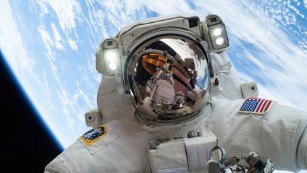After a year in space, astronaut’s DNA no longer matches that of his identical twin
www.cnn.com/2018/03/14/health/scott-kelly-dna-nasa-twins-study/index.html
You think Earth has it bad? When it comes to extreme weather, Earth is tame compared to some of the other planets in our solar system.
Venus Has Sulphuric Acid Rain
Venus has a thick atmosphere made mostly of carbon dioxide. The thick atmosphere captures more of the sun’s radiation than Earth’s atmosphere does. In combination with the carbon dioxide, this makes the rain consist of sulphuric acid instead of water!
There are no known lifeforms on Venus, but if there were, they could count themselves lucky that the acid rain evaporates before it hits the ground. This is because the surface temperatures on Venus are so high.
Extreme Cold of Uranus
Uranus is the coldest planet in our solar system. Its temperatures can reach an extreme low of -371.2 F. However, Uranus also has a sparkling phenomenon—raindrops made of diamonds!
Extreme Blizzards on Mars
Have you ever used dry ice to create spooky fog on Halloween? Or to keep something perishable cold while shipping? If so, you know how frigid dry ice can be.
Mars has snow made of frozen carbon dioxide rather than water. So, instead of typical Earth snow, Mars’ snow is made up of dry ice!
Mercury’s Unbearable Temperature Changes
Unlike many of the planets in our solar system, Mercury has practically no atmosphere. Since it is so close to the sun, the temperatures can soar to a high of 800.6 F during the day, and then plunge to -277.6 F at night. This is because there is not a thick enough atmosphere to trap the warmth at night.
Mercury’s lack of an atmosphere also means no clouds, rain, wind, or storms.
So, the next time you are complaining about the weather, consider how lucky we are to only have Earth’s weather to contend with.









